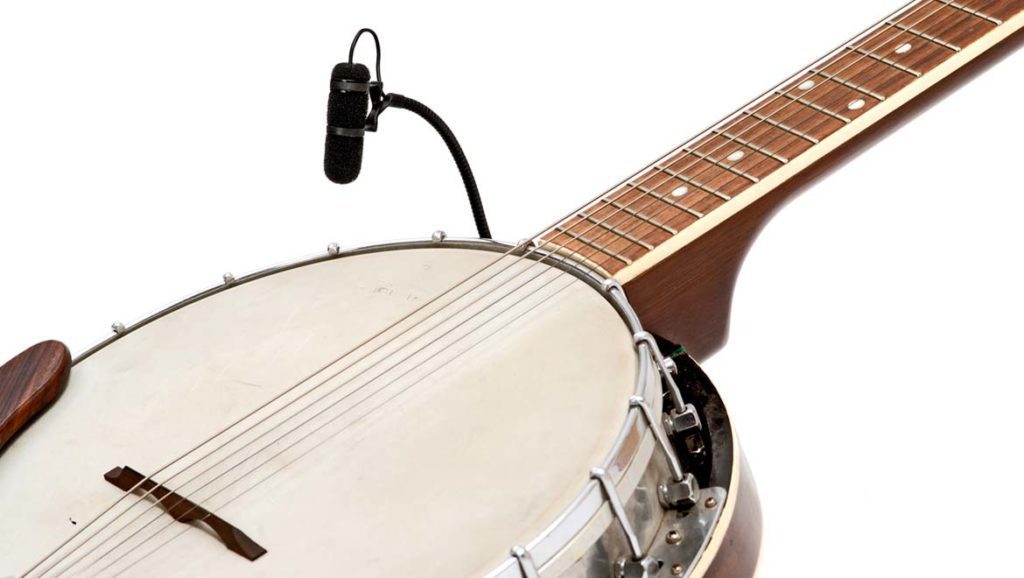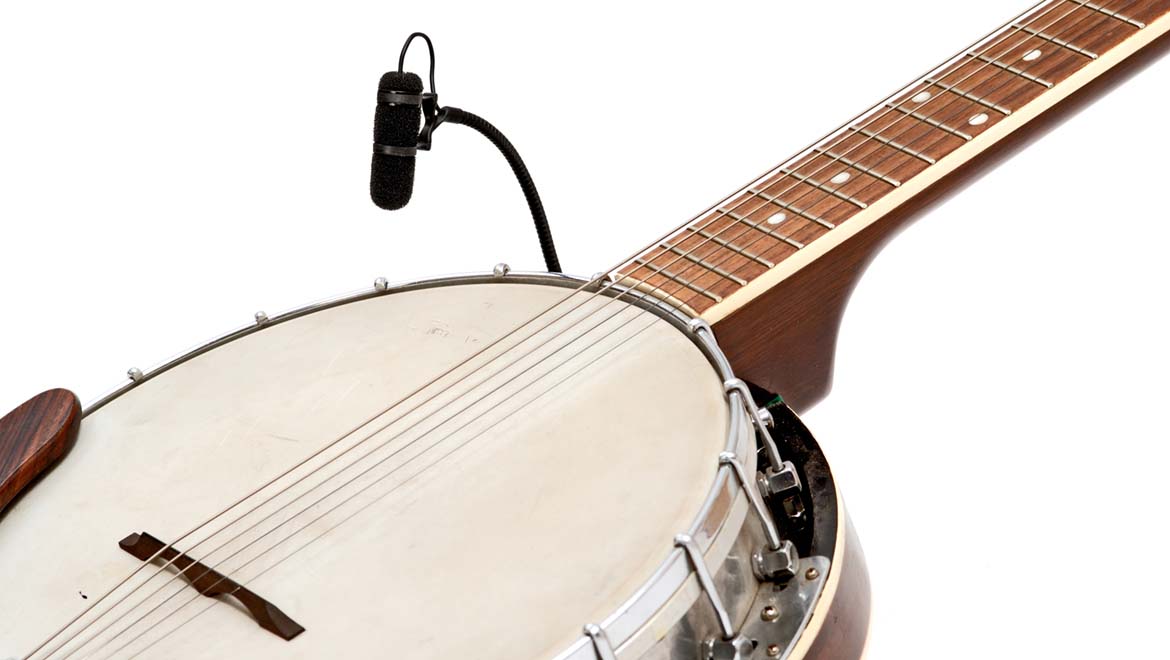The banjo is a unique and versatile instrument that is used in a variety of musical genres, including bluegrass, folk, and country. Whether you are recording a banjo in a studio or mic’ing it up for a live performance, it’s important to know how to get the best sound out of this distinctive instrument. In this article, we’ll discuss some tips and techniques for mic’ing a banjo live and in a studio.

Banjo Microphones and Pick-ups
Live Mic’ing a Banjo
When mic’ing a banjo for a live performance, there are several factors to consider. Here are some tips to help you get the best sound possible:
- Choose the right microphone.
The type of microphone you choose will play a significant role in the sound you get from your banjo. A dynamic microphone, such as the Shure SM57, is a popular choice for live performances because it can handle high sound pressure levels (SPLs) and is less sensitive to feedback. A condenser microphone, on the other hand, is more sensitive and can provide a more detailed sound, but it may be more prone to feedback. Best Microphones for Banjo
- Position the microphone correctly.
When mic’ing a banjo for a live performance, you want to position the microphone in a way that captures the natural sound of the instrument without picking up too much extraneous noise. Here are a few positioning tips to consider:
- Place the microphone about six to eight inches away from the banjo’s head, pointing towards the bridge.
- Angle the microphone slightly towards the 12th fret to capture the full range of the instrument.
- If you’re using more than one microphone, position them in a stereo configuration to capture the banjo’s stereo image.
- Use a pickup.
Another option for live mic’ing a banjo is to use a pickup. A pickup is a device that attaches to the banjo’s bridge and converts the vibrations of the strings into an electrical signal that can be amplified. There are several types of pickups available, including piezo pickups, magnetic pickups, and microphone pickups.
Best Banjo Pickups.
Using a pickup can be a good option if you’re playing in a noisy environment or if you need to move around on stage. However, pickups can also produce a more artificial sound compared to mic’ing the banjo, so it’s important to choose the right pickup for your needs.
Studio Mic’ing a Banjo
When recording a banjo in a studio, you have more control over the recording environment, which allows you to experiment with different mic’ing techniques to find the perfect sound. Here are some tips to help you get the best sound possible:
- Choose the right microphone.
As with live mic’ing, the microphone you choose for recording will have a significant impact on the sound you get. A large-diaphragm condenser microphone is a popular choice for recording a banjo in a studio because it can capture the full range of the instrument’s sound and provide a detailed, natural sound.
- Experiment with microphone placement.
When recording a banjo in a studio, you have the luxury of experimenting with different microphone placements to find the best sound. Here are a few techniques to try:
- Place the microphone about six to eight inches away from the banjo’s head, pointing towards the bridge.
- Use two microphones in a stereo configuration to capture the banjo’s stereo image.
- Try placing a microphone below the banjo’s resonator to capture the low-end frequencies.
- Experiment with different microphone polar patterns (cardioid, omni, or figure-8) to find the best sound for your recording.
- Consider using a room mic.
In addition to close-mic’ing the banjo, you may want to consider using a room microphone to capture the natural reverb and ambience of the recording environment. A room mic can add depth and dimension to your recording and help create a more natural, organic sound. Place the room mic several feet away from the banjo, facing the instrument, and experiment with the distance and placement to find the best sound.
- Don’t be afraid to use EQ and compression.
Once you have recorded your banjo tracks, you may need to apply some post-processing to achieve the desired sound. EQ can be used to shape the frequency response of the recording, while compression can help even out the dynamic range of the performance.
When using EQ, pay attention to the frequency range of the banjo and use a gentle touch to avoid altering the natural sound of the instrument. Compression should also be used sparingly, as too much compression can make the recording sound unnatural.
Conclusion
Mic’ing a banjo live or in a studio requires careful consideration of several factors, including microphone selection, placement, and post-processing. By following these tips and techniques, you can achieve a natural, balanced sound that accurately captures the unique qualities of the banjo.
Remember to experiment and trust your ears when mic’ing a banjo. Every banjo and recording environment is different, so what works for one situation may not work for another. With some patience and persistence, you can find the perfect mic’ing setup for your banjo and create recordings that truly capture the essence of this iconic instrument.
31 Facts About the Banjo
10 Best Banjo Festivals in the U.S.
10 Best Banjo Podcasts
Banjo Tabs

